Technical Tour
Update: This tour is limited to 100 participants, and it recently sold out. If you have a ticket that you will not use, you can return it for a refund by modifying your original registration via the link provided in your confirmation email. If you want to be added to this wait list, please email registration@hapticssymposium.org with the subject "HAPTICS Technical Tour Wait List Request".
Conference attendees have the option of signing up for a technical tour, which will take place on Wednesday, March 28, from 1:15 to 7:00 pm, after the rest of the conference activities have concluded. Taking part in the tours will require an extra fee that is paid during registration; this fee covers the cost of transportation to and from Stanford University. All tour participants must register, regardless of whether they use the tour buses or their own transportation. During the tour, participants will visit all of the laboratories listed below and will also have time to visit the Stanford Bookstore. Be prepared for up to 3 miles of walking around campus. We will be happy to provide mobility accommodations as needed. Please email tour@hapticssymposium.org to alert us if mobility accomodations are required. Due to space limitations, the technical tour is limited to the first 100 conference attendees who sign up for a technical tour on the registration site.
SHAPE Lab
shape.stanford.edu
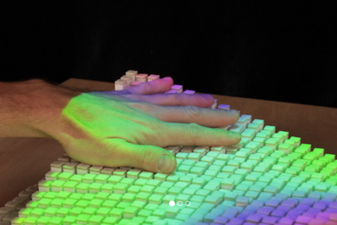
The Stanford SHAPE Lab, directed by Prof. Sean Follmer, explores how we can interact with digital information in a more physical and tangible way. We develop advanced technologies in robotics, mechatronics, and sensing to create interactive, dynamic physical 3D displays and haptic interfaces that allow 3D information to be touched as well as seen. We are specifically interested in using these novel interfaces to support richer remote collaboration, computer aided design, education, and interfaces for people with visual impairments. In pursuit of these goals, we use a design process grounded in iterative prototyping and human centered design and look to create new understanding about human perception and interaction through controlled studies. Our research in Human Computer Interaction and Human Robot Interaction is currently directed in five areas: dynamic physical shape displays, wearable haptics for grasping in VR, ubiquitous robotic interfaces, mobile haptics, and soft actuation and sensing.
CHARM Lab
charm.stanford.edu
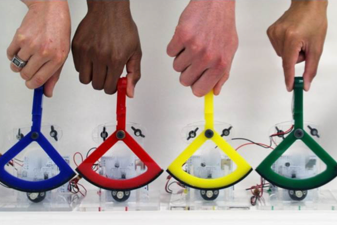
The Stanford Collaborative Haptics and Robotics in Medicine Lab, directed by Prof. Allison Okamura, designs and studies haptic systems using both analytical and experimental approaches. Haptics, the sense of touch, is crucial for human exploration and manipulation of the world. In medicine and rehabilitation, haptic interaction is often necessary for reasons of performance, safety, and user acceptance. Our research is devoted to developing the principles and tools needed to realize advanced robotic and human-machine systems capable of haptic interaction. We are particularly interested in teleoperation, virtual environments, and robotic manipulation. This research has applications in many areas, including robot-assisted surgery, simulation and training, rehabilitation, exploration of hazardous or remote environments, enabling technologies, manufacturing, design, mobile computing, and education. A major theme of our work is biomedical systems.
Biomimetics and Dexterous Manipulation Lab
bdml.stanford.edu
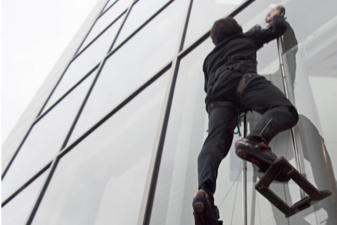
The Stanford Biomimetics and Dexterous Manipulation Lab, directed by Prof. Mark Cutkosky, studies bioinspired mechanical systems. Current areas of research include adhesions and applications, mobile manipulation, multi-limbed climbing, MR compatible tools, smart graspers for minimally invasive surgery and robot-assisted surgery, multi-modal robots, automotive haptics, tunable compliance and damping, and manufacturing and prototyping.
Camarillo Lab
camlab.stanford.edu
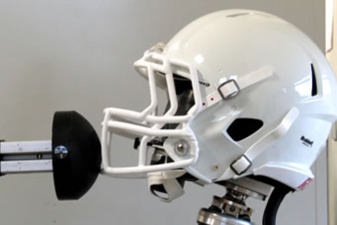
The Stanford Camarillo Lab, directed by Prof. David Camarillo, invents intelligent biomedical devices that advance science, enhance health, and reduce illness and disability. Current projects include: investigating the mechanism of concussion and characterizing the response of head-blows through imaging, blood, and other neurophysiological measurements; researching cell mechanics for regenerative medicine to develop a quantitative, noninvasive and early (day 1) measure of viability; and improving the usability and safety of the process of cardiac catheter ablation through new control methods, medical image guidance, and automation for robotic catheter procedures.
Stanford Robotics Lab
cs.stanford.edu/group/manips
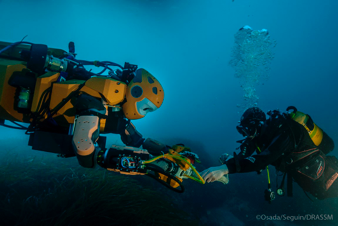
The Stanford Robotics Lab, directed by Prof. Oussama Khatib, is involved in research pertaining to robotic manipulation and control with a focus on interacting with humans in unstructured environments. In addition to developing safe, reactive and compliant autonomous behaviors to work in such environments, we also study human motion control and manipulation skills to develop complex interaction capabilities between robots and humans. A key aspect of this interaction is a rich interface that allows multi-modal communication either at a distance or while co-operating in the same space. Our recent successes include Ocean One, the first underwater humanoid robot, which was used by archeologists to recover artifacts from the Mediterranean seabed.
Please email tour@hapticssymposium.org with any questions about the technical tour.


